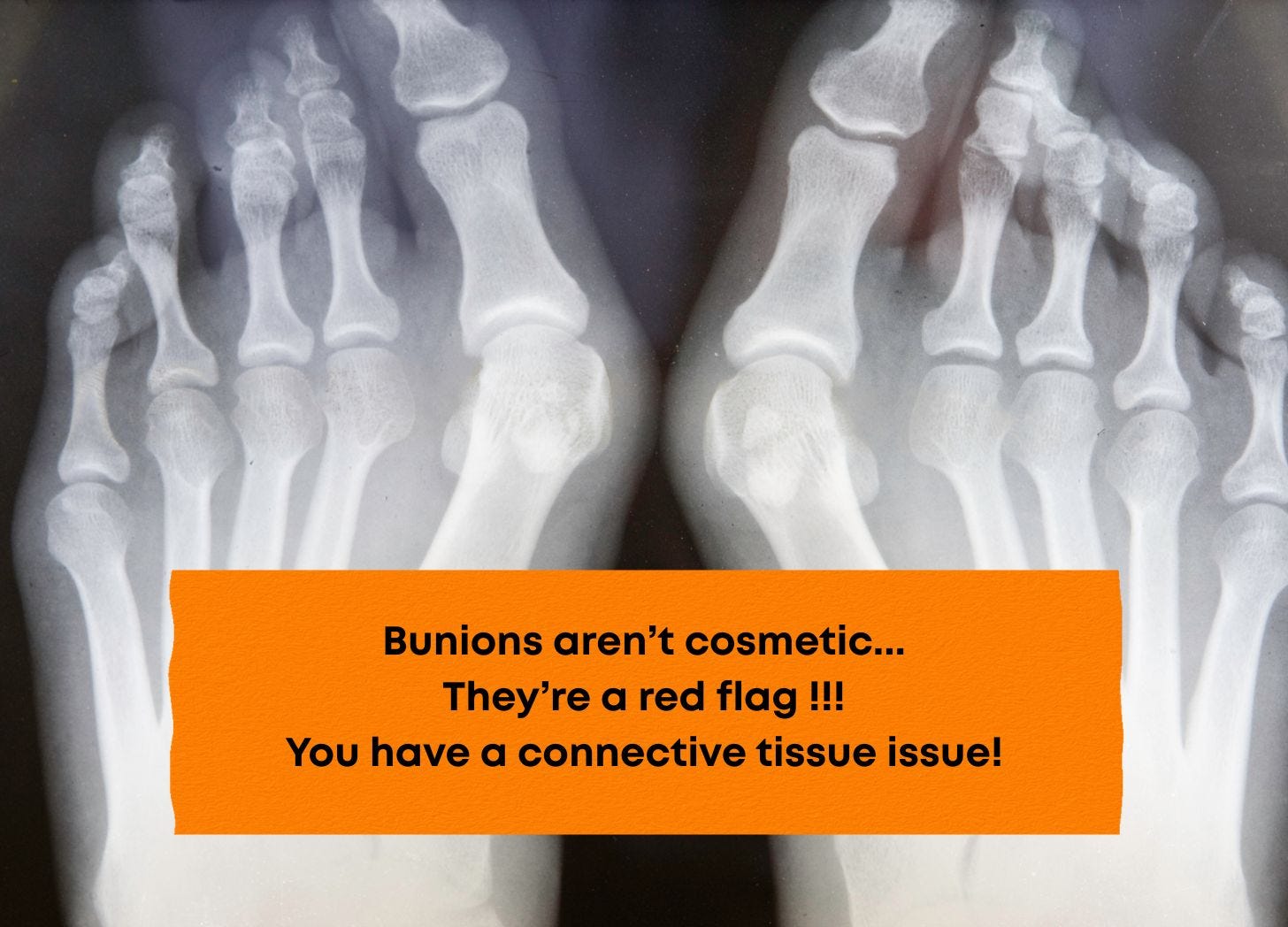What My Grandmother’s Feet Taught Me About Hypermobile Bodies
I’ll never forget the image: my grandmother propped up in bed, casts on her feet, what looked like knitting needles sticking out of her big toes.
She’d had her feet “done.”
The family curse—bunions, of course. Those bony barnacles that grow on the inner edge of the foot where the big toe meets the metatarsals.
She sent me into the back of her musty closet to grab a box. I pulled it out, she peeled back the tissue paper, and with a twinkle in her eye said, “Now I’ll be able to wear these!”
My grandmother had surgery for cosmetic reasons. But I can’t ever recall her walking farther than the short stretch from her front door to her pale blue Chevy. Still, she put miles on those feet every day—up and down stairs, cleaning, cooking, tending to the house.
Now I’m the same age she was when she had hers done. And guess what? I’ve got bunions too. One big one on the right, and a growing twin on the left. My right big toe barely bends anymore, and I work diligently to maintain the little toe flexion I have.
But I don’t want surgery. I’ve heard enough horror stories. Besides, my approach is different.
It wasn’t until about five years ago, sitting on my uncle’s deck, that I began connecting more dots. I looked down at his feet—his second toe had wrapped itself like a vine around his third. Years of squeezing into narrow shoes had done their damage. But that wasn’t the whole story.
You see, we’re a hypermobile family. Me, my grandmother, my uncle—we all live on the looser end of the connective tissue spectrum.
When I see bunions, I don’t just see a foot deformity. I see a signal—a red flag that the person in front of me may have lax connective tissue. Fascia that’s more like cooked spaghetti than al dente.
People like us are all gas pedal and no brakes. We jiggle and wiggle our way through life, praised for our flexibility in yoga class—until that very trait starts causing problems.
Turns out, all that passive stretching? Not so good for us after all.
So no, bunions aren’t inherited. But the quality of connective tissue is. And that’s the breeding ground for bunions.
And no, you can’t stretch your bunions away. But you can strengthen and realign the muscles of the foot. You can teach your big toe to realign with its partner, the first metatarsal.
I know—because I’ve done it.
If you’ve never heard of Ehlers-Danlos Syndrome or Hypermobility Spectrum Disorder, it’s time to get curious. This isn’t just about feet. It’s about your heart valves. Your skin. Your digestion. Your brain.
Hypermobile folks tend to bruise easily. They often feel tight despite being incredibly flexible. They may suffer from anxiety, have poor balance, and are frequently told they need a stronger core.
And while some of us manage fairly well (I put myself in that category), others live in constant fear of the next dislocation.
Here’s the tricky part—most doctors don’t know much about it. Physios are just starting to clue in. And unfortunately, many well-meaning professionals advise doing less, which can backfire. Because yes, we do need strength—but we need to build it in a completely different way.
Too much effort? It can send our systems into meltdown. Pain. Fatigue. System overload.
Manual release techniques? Often make it worse.
And it’s not just joints. It affects gums and teeth, skin and hair. Even our nervous system tone regulation.
I’m sharing all this because I see it. Every week. Clients who are doing all the right things and still feeling broken. Who don’t know there’s a reason for their chronic pain, fatigue, and instability.
There is.
And it starts with understanding your body better.
So what does a movement practice for a hypermobile body need to look like?
That’s what I’ll share next
.






I am hypermobile, can still do splits without a warm up and I was born in the 1960s. I am lucky I do not have bunions, but will admit that finding pilates in my 20s was a Godsend. I learnt to make my body strong and it was never going to be cut, but strong and flexible. Yoga was a disaster for me to open chain and allowed me to flop into my stretch, The springs of pilates has been my saviour
My niece has EDS and my son is hyper-mobile. The only specialist in Toronto (where my niece lives) killed his wife a few years ago. She was also a doctor. Needless to say, he's no longer in practice. EDS is hereditary but she's the only one in our large family to have it.